This post may contain affiliate links, which means I get a small percentage of the sale at no extra cost to you. I only recommend items I love and have had a positive experience with. Thank you!
This coconut oil pie crust may be a healthier version of homemade pie crust, but there is no sacrifice on flavor or texture! With a few tricks, coconut oil crust is flaky and delicious.
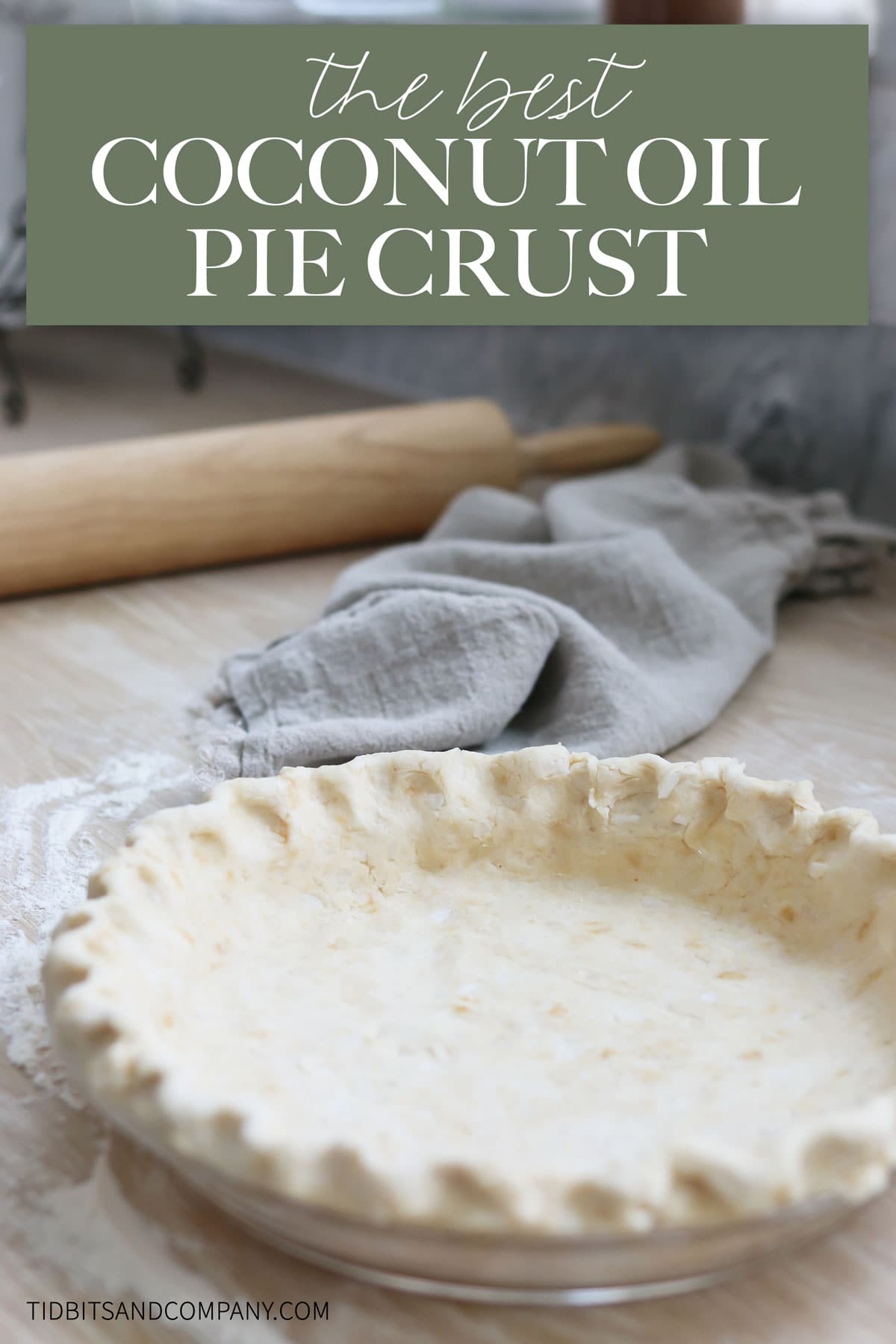
We all love a good pie crust, don’t we? The right pie crust can make a good pie into a great pie.
Right now is prime pie season. Yes – pie season is a thing! I’m not complaining either. In fact, I can’t wait to start making (and eating!) some delicious holiday pies.
One of those holiday pies will most definitely be filled with my healthy pumpkin pie filling. So good! And you can bet that it’ll also be made with this coconut oil pie crust.
Now, I have nothing against good ol’ butter or lard in a pie crust – but if you’re looking for a vegan pie crust or want a healthier version with lower cholesterol – this is it!
Sometimes when we make traditional recipes a little “healthier” or swap out ingredients, we can expect to sacrifice a bit on flavor or texture. This is not the case with a coconut oil pie crust!
There are a few important tricks of the trade you’ll need to know in order to make the best version of this pie crust, but when I heard my hubby say the words, “best pie crust ever“, I knew I had hit jackpot with this recipe.
Table of contents
- Why You’ll Love this Coconut Oil Pie Crust
- Printable Coconut Oil Pie Crust Recipe
- What Makes Coconut Oil so Great for You?
- What You’ll Need to Make this Recipe
- The Secret to Working With Coconut Oil in a Pie Crust
- Steps to Making a Coconut Oil Pie Crust
- Baking Your Coconut Oil Pie Crust
- Storing and Freezing Your Coconut Oil Pie Crust
- FAQ’s
- More Delicious Holiday Recipes
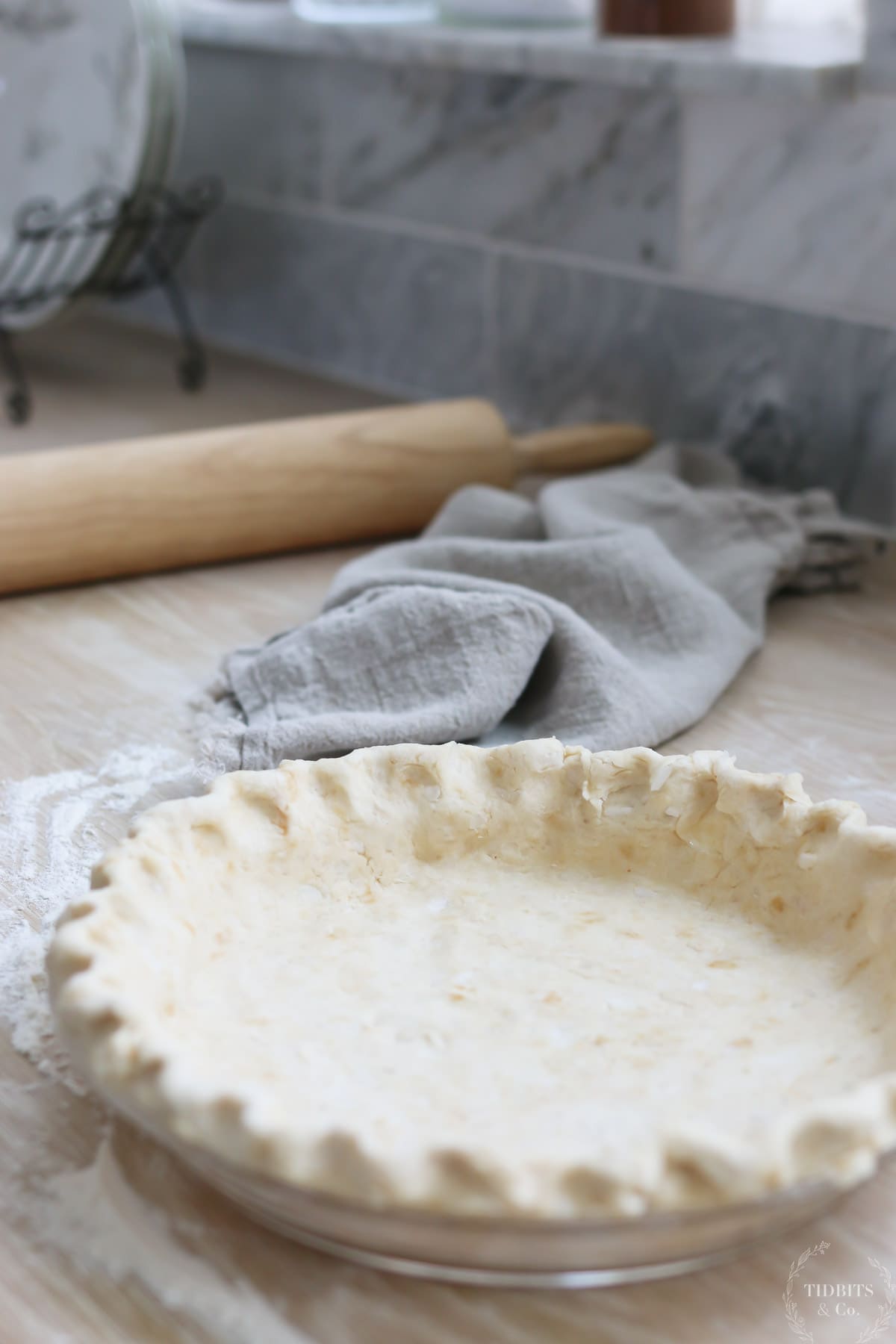
Why You’ll Love this Coconut Oil Pie Crust
This delectable coconut oil pie crust is healthy, has fantastic flaky texture, is easy to make and has a wonderful taste. In fact, I did a pie crust taste test for my family and you know which pie crust won? This one! We all loved the flavor and flaky texture!
I think this pie crust would make fantastic quiche, savory pies (like a chicken pot pie), or tarts. Regardless of what pie-type dish you make this crust into, it’s going to taste fabulous!
Don’t be intimidated over working with coconut oil in this recipe. It’s easy and requires very little prep time. You’ll be amazed to find out that coconut oil makes a pie crust dough that is easy to work with and that cooks up incredibly well.
Printable Coconut Oil Pie Crust Recipe
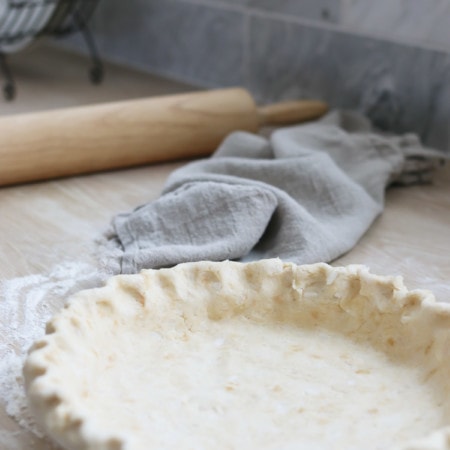
The Best Coconut Oil Pie Crust Recipe
Ingredients
- 1/2 cup coconut oil
- 1 1/4 cup all purpose flour or whole wheat pastry flour
- 1/2 tsp salt
- 1/2 tsp coconut sugar
- 6-8 tbsp cold water, or more if needed
Instructions
- Spread the coconut oil out on parchment paper. This doesn't need to be pretty, just get it out as flat as possible.
- Place the coconut oil in the freezer for at least a half an hour, until frozen and solid.
- Work quickly with the rest of the process, to prevent the coconut oil from softening.
- Mix the dry ingredients together in a food processor or (bowl and pastry cutter) and then break the frozen coconut oil into large chunks into the bowl with the dry ingredients.
- Pulse them or cut the oil into the dry ingredients until incorporated into pea size chunks. Try not to over work it, which will cause the oil to soften too quickly.
- Slowly add the water and work it in until you can form a ball with the pie crust dough. Try to prevent the dough from becoming too wet. It should just slightly hold together when pressed.
- Form the dough into a ball.
- Wrap the dough in plastic wrap or place in bag and refrigerate for at least 1 hour. You can keep it in the fridge overnight, if you need to make the pie the next day.
- When ready to make the pie crust, lightly flour your surface and roll the dough out until about 1/4 inch thick.
- Use the rolling pin to help you lift the dough into your pie dish.
- Shape the edges by either cutting off the excess, or rolling it under and using your finger to form a scalloped pie edge.
- At this point you can either freeze, refrigerate or bake the pie crust! If your pie filling calls to bake the crust first, you can do that. Many liquid based pie fillings like pumpkin pie or an egg quiche will ask you to blind bake the crust.
- To blind bake means to partially or fully cook the crust before adding the filling. It's best to add pie weights or something like dry beans on top of a parchment paper inside the pie crust. Bake in an oven that has been preheated to 425 degrees, for about 8 minutes.
- Then remove the weights and parchment paper, poke the bottom of the crust with a fork several times, and bake for another 8-10 minutes. Then you can add the filling and cook until done, according to the pie filling instructions.
Notes

What Makes Coconut Oil so Great for You?
Coconut oil has some unique benefits that can make it a great choice for people who are trying to eat a healthy diet. Some of coconut oil’s benefits are:
- Antioxidants: Coconut oil is a good source of cell-protecting antioxidants.
- Anti-inflammatory: Coconut oil contains compounds with anti-inflammatory properties.
- Antimicrobial: The lauric acid in coconut oil has beneficial antimicrobial properties.
- Healthy Fat: Coconut oil contains medium-chain triglycerides (or MTC’s) that are absorbed more quickly by the body than long-chain triglycerides, which means they get metabolized and turned into energy more quickly than other forms of fat.
- Weight Management: Because of its healthy fat, coconut oil may be a good option for weight management.
- Heart Healthy: The MTC’s in coconut oil are a healthier option for the heart than other fats.
- Blood Sugar Regulation: Those MTC’s may even be helpful in regulating blood sugar levels.
Many people prefer coconut oil over other forms of fat for it’s potential health benefits. It’s a great healthy option for recipes like this one. But rest assured, even those people who aren’t after the health benefits of coconut oil will love the flavor and texture this pie crust. It’s just plain good!
What You’ll Need to Make this Recipe
To make this coconut oil pie crust, you’ll need the following:
Equipment
- a pie pan
- parchment paper
- a spatula (or something to use to spread the coconut oil)
- a rolling pin
Ingredients
The ingredients listed here are for one crust. If you are making something like apple pie and need both a bottom crust and a top crust, just double this recipe.
- 1/2 cup coconut oil
- 1 1/4 cup all purpose flour or whole wheat pastry flour
- 1/2 teaspoon salt
- 1/2 teaspoon coconut sugar
- 6-8 tablespoons cold water, or more if needed
The Secret to Working With Coconut Oil in a Pie Crust
The key to making pie crusts flaky is to work with a very cold fat product. This is why recipes call for refrigerated or frozen butter and lard. It’s when those lovely chunks of fat begin to melt in the cooking process, that the crust breaks apart in flakes. I am sure there is a better science-y way to explain that, but there it is in layman’s terms.
Coconut oil would normally be problematic in this process because it is semi-solid at room temp, but melts quickly under heat or friction. This is why steps number 1 and 2 below are key to a successful coconut oil pie crust.
Steps to Making a Coconut Oil Pie Crust
- Spread the room temperature coconut oil out on parchment paper. This doesn’t need to be pretty, just get it out as flat as possible.
- Place the coconut oil in the freezer for at least a half hour, until frozen and solid.
- Work quickly with the rest of the process, to prevent the coconut oil from softening.
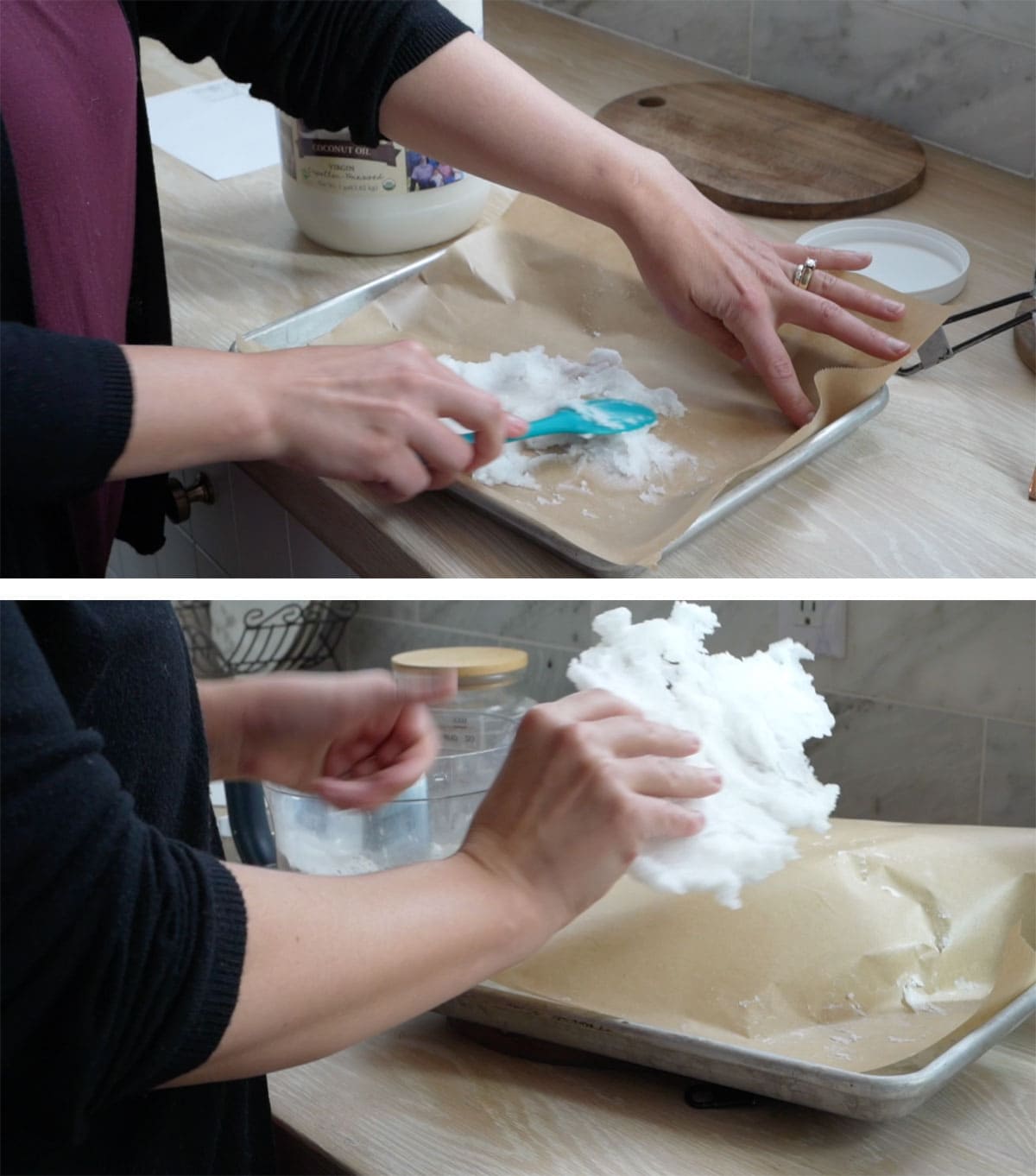
- Mix the dry ingredients together in a food processor or bowl and then break the frozen coconut oil into large chunks into the bowl with the dry ingredients.
- Pulse them or cut the oil into the dry ingredients until incorporated into pea size chunks. Try not to over work it, which will cause the oil to soften too quickly.
- Slowly add the water and work it in until you can form a ball with the pie crust dough. Try to prevent the dough from becoming too wet. It should just slightly hold together when pressed.
- Form the dough into a ball.
- Wrap the dough in plastic wrap or place in bag and refrigerate for at least 1 hour. You can keep the pie crust in the the fridge overnight, if you need to make the pie the next day.
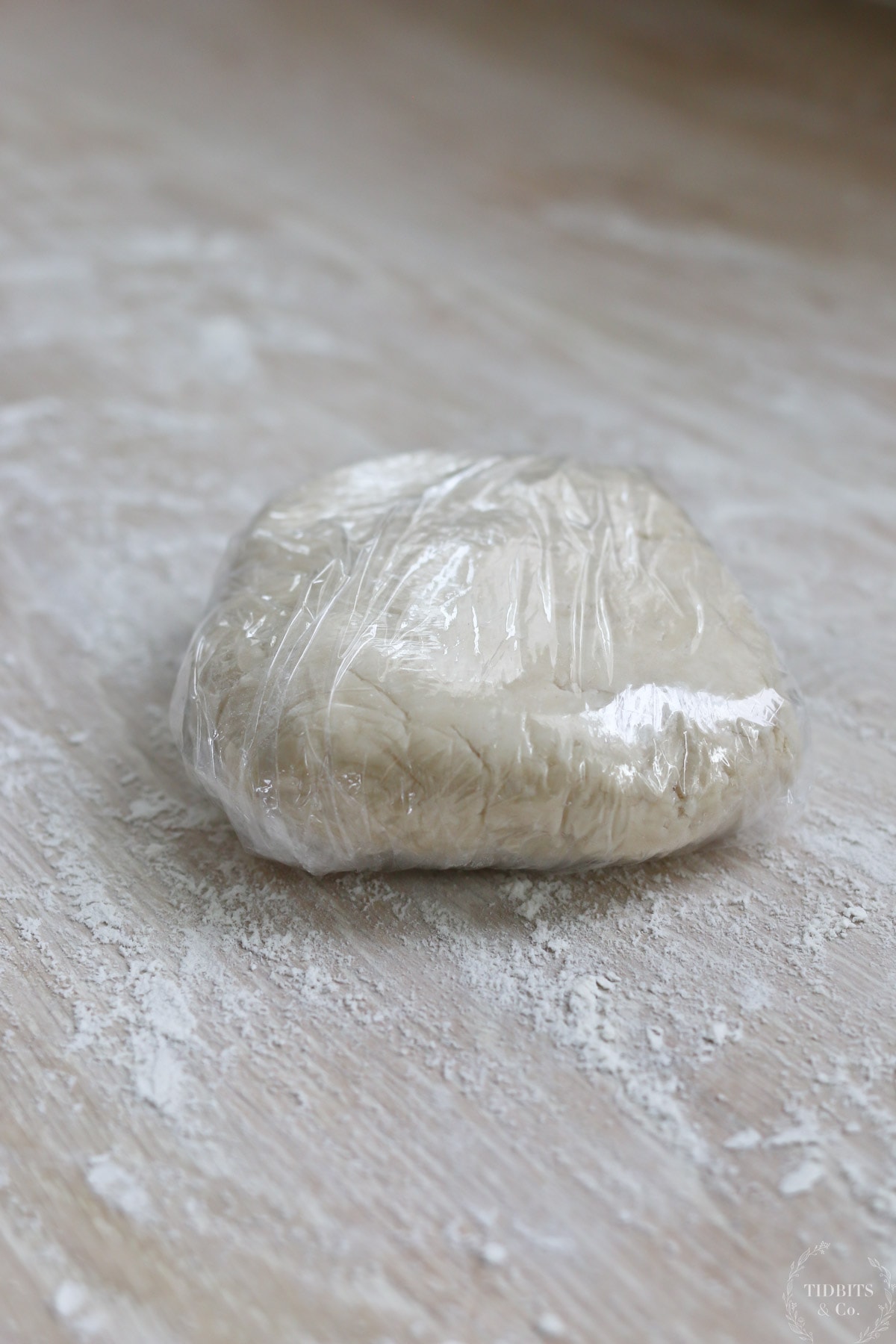
- When ready to make the pie crust, lightly flour your surface and roll the dough out until about 1/4 inch thick.
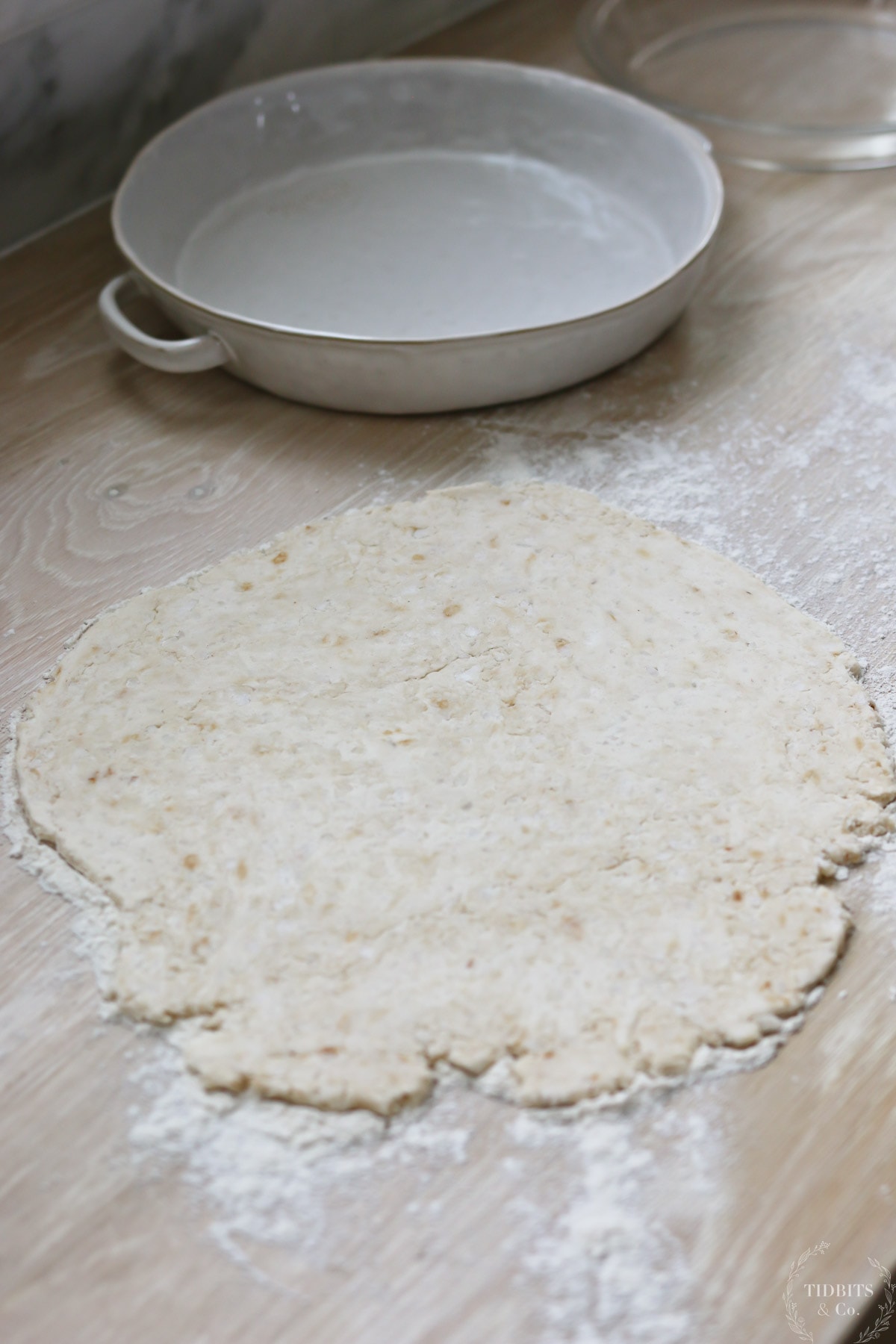
- Use the rolling pin to help you lift the dough into your pie dish.
- Shape the edges by either cutting off the excess, or rolling it under and using your finger to form a scalloped pie edge.
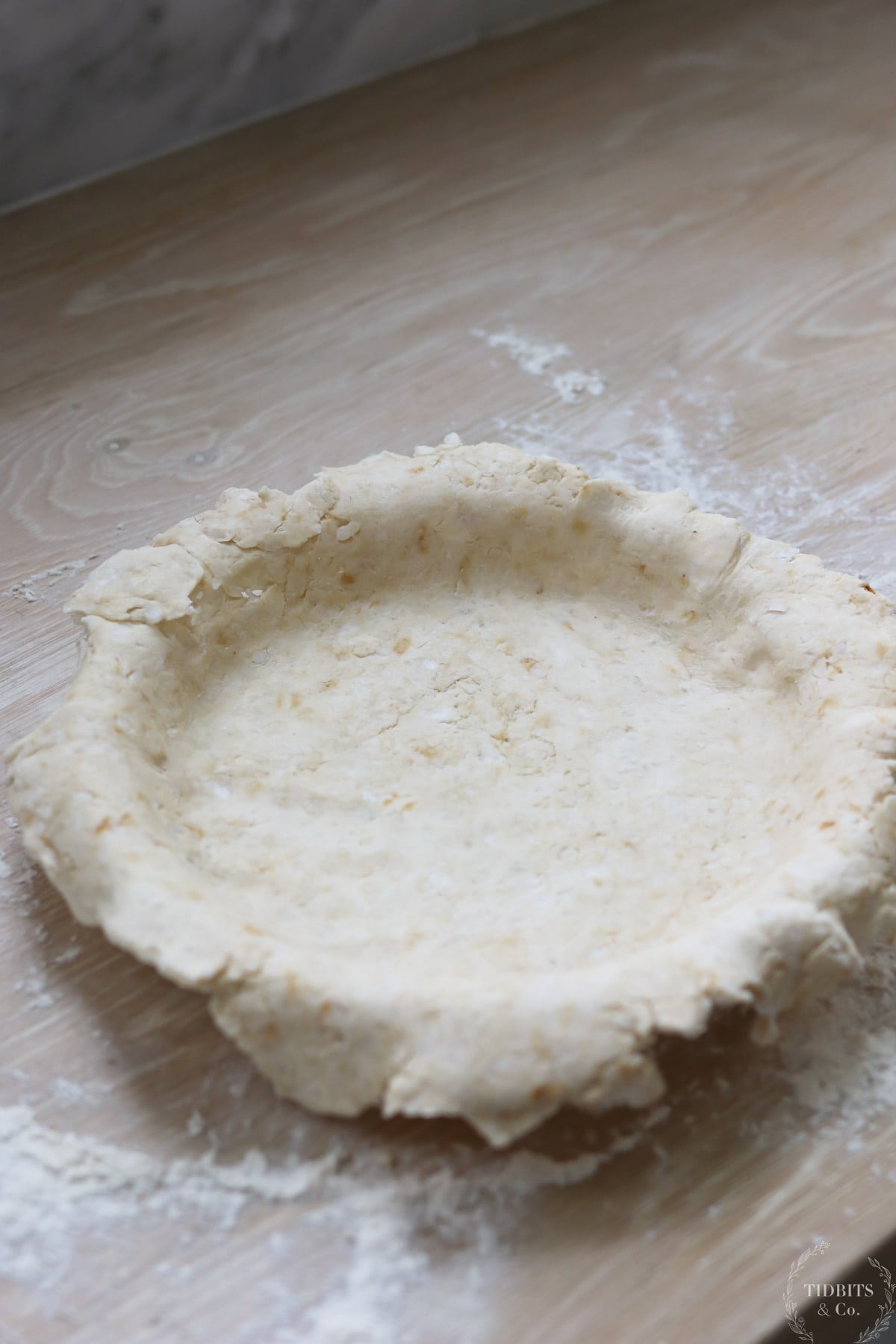
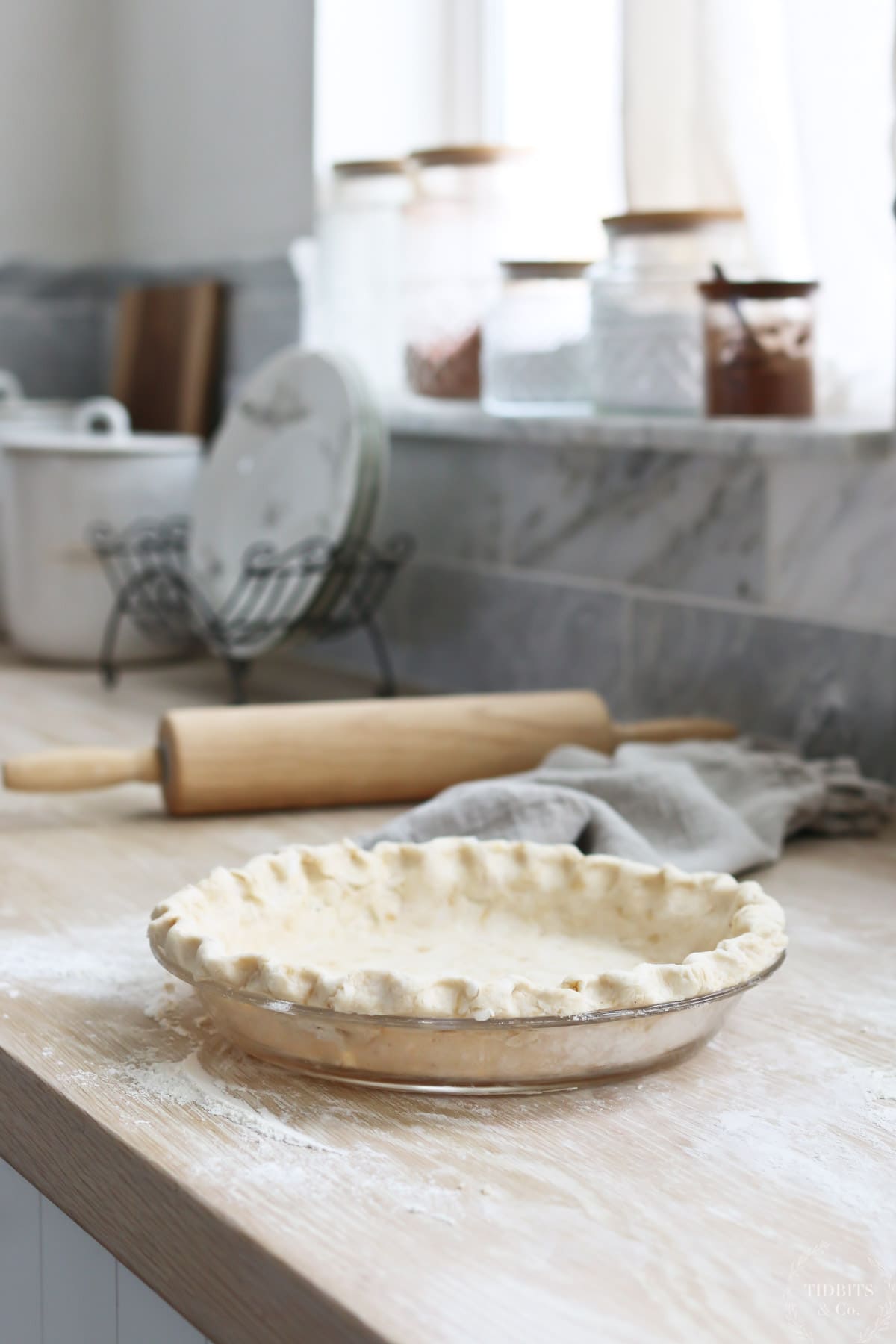
Baking Your Coconut Oil Pie Crust
At this point you can either freeze, refrigerate or bake the pie crust! If your pie filling calls to bake the crust first, you can do that. Many liquid based pie fillings like pumpkin pie or an egg quiche will ask you to pre-bake or blind bake the crust.
To blind bake means to partially or fully cook the crust before adding the filling. It’s best to add pie weights or something like dry beans on top of a parchment paper inside the pie crust. Bake in an oven that has been preheated to 425 degrees Fahrenheit, for about 8 minutes.
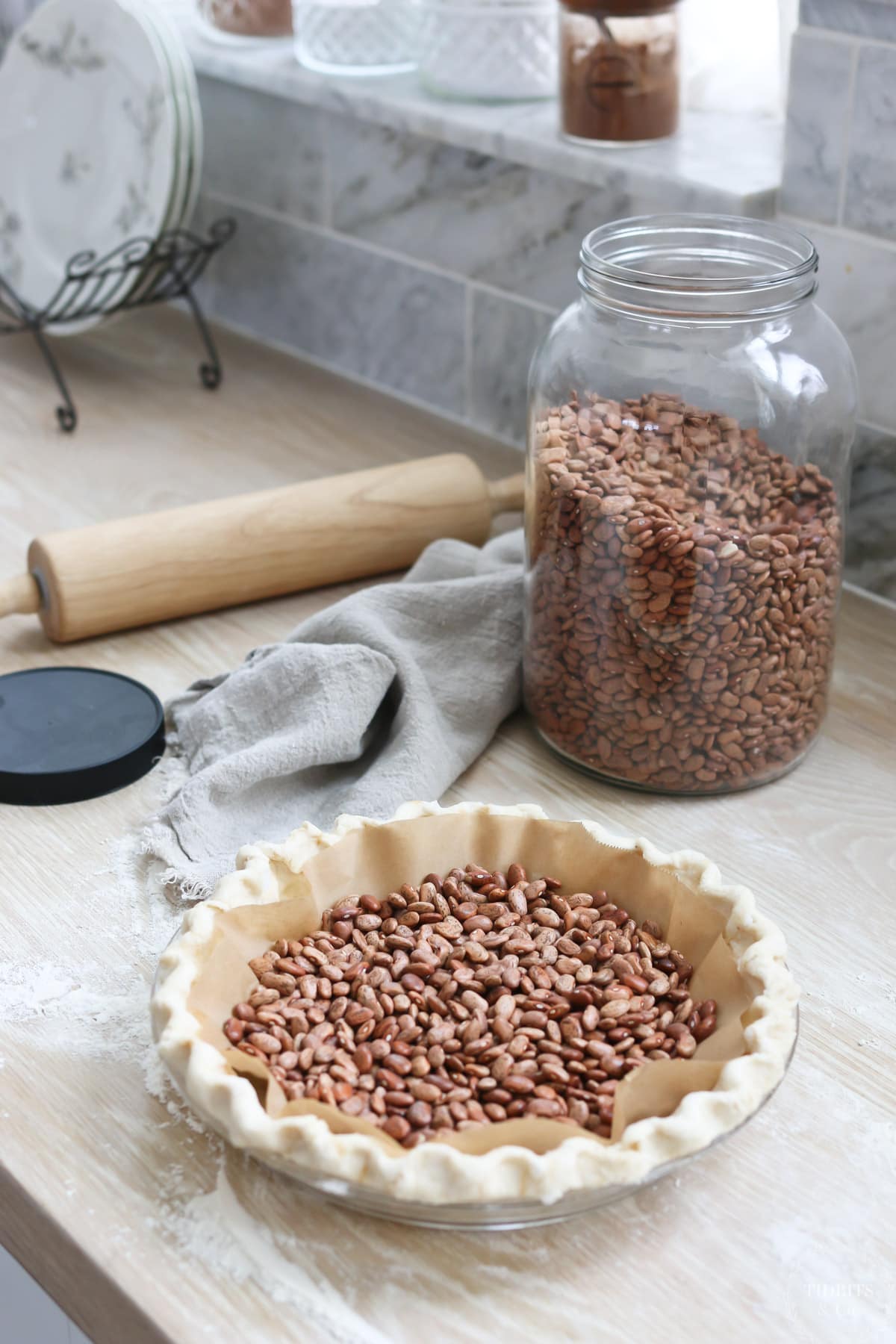
Next, remove the weights and parchment paper, prick the bottom of the crust with a fork several times, and bake for another 8-10 minutes. Then you can add the filling and cook until done.
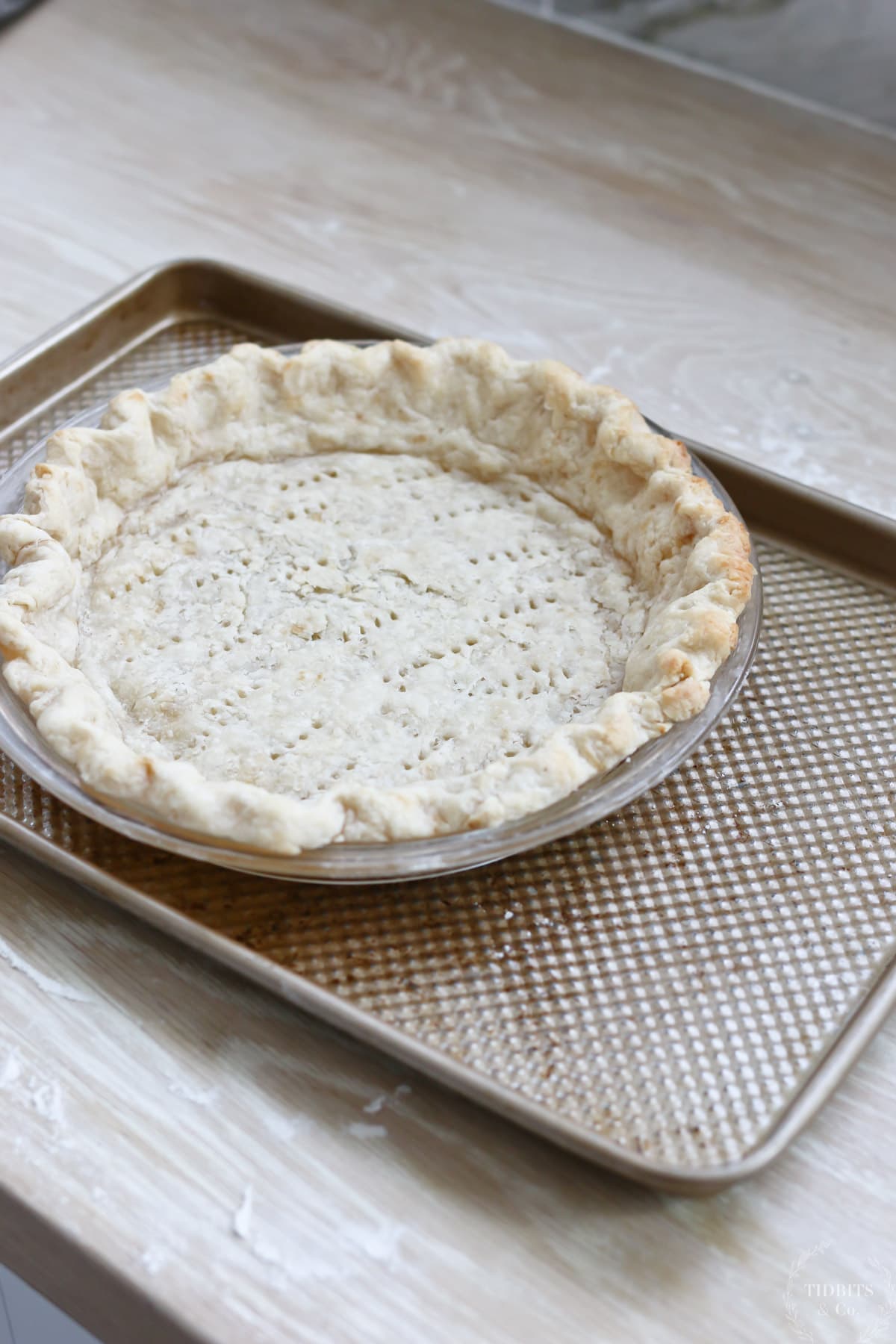
Pro tip: Put the pie on a sheet pan, to make transportation of the pie crust in and out of the over easier, and to prevent spills.
Storing and Freezing Your Coconut Oil Pie Crust
You can store your baked or unbaked pie crust in either the refrigerator or freezer.
Unbaked Pie Crust
For an unbaked pie crust, you can roll it and shape it in a pie plate out or keep it in a ball. Either way, you’ll want to keep your pie dough tightly wrapped to prevent it drying out. Store in the fridge for a few days or in the freezer for several weeks.
If you’re storing your unbaked pie crust in the freezer, make sure it’s in a freezer safe bag or something similar to prevent freezer burn. Allow your frozen unbaked pie crust to thaw to room temperature before filling or baking.
Baked Pie Crust
If you have a baked pie crust, you can also store it in the fridge or freezer. After baking, allow it to cool, then cover or wrap it. Store it in the fridge for several days or in the freezer for several weeks. Make sure that your pie crust is in a freezer safe bag or similar if you are storing it in the freezer.
Thaw your frozen baked pie crust to room temperature before filling or baking again.
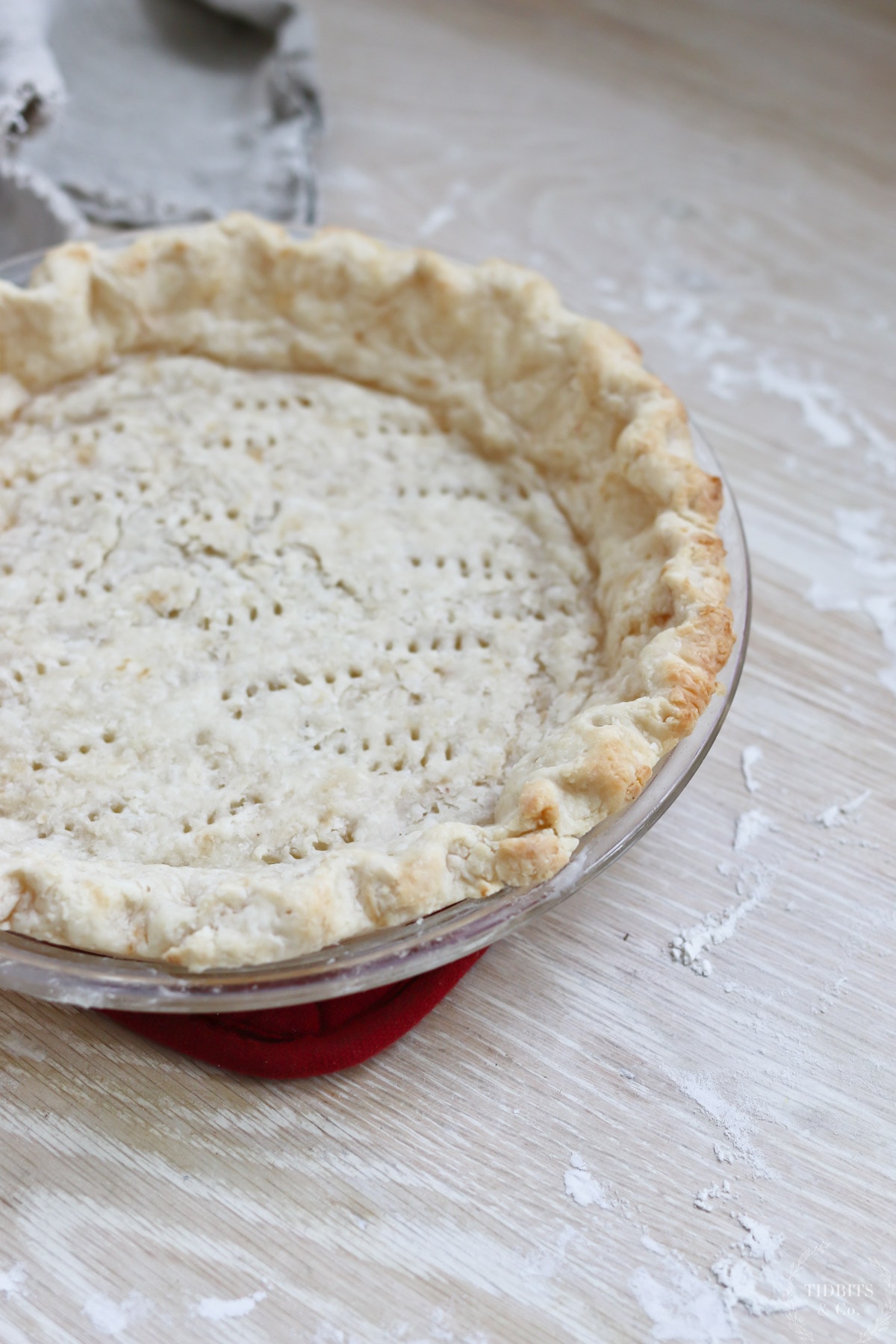
FAQ’s
Yes, you can use other types of flour, like gluten-free flour, in your pie crust. However, different types of flour will produce different textures and tastes, so keep that in mind when deciding what you want to use for your pie crust.
No. Coconut oil works for this recipe because it can be frozen into a solid that is able to be cut into the flour. Vegetable oils, or other liquid oils, won’t do this and therefore won’t work in this recipe.
More Delicious Holiday Recipes
I hope you give this recipe a try! Let me know what you think if you do, and please consider saving this recipe on your Pinterest boards or sharing it with a friend. Thank you!
If you’re looking for more holiday recipes, I’ve got you covered. Try one from the list below and enjoy! And if you’ve got a holiday favorite, I’d love to hear what it is. I’m always looking for something new to try.
- Chocolate Peanut Butter Truffles
- All Natural Orange Almond Cookies
- Braided Sugar Cookie Sticks
- Healthy Pumpkin Pie Filling – So Good!
- Healthy Pumpkin Muffins | Quick to Make and So Delicious!
- How to Make Roasted Pumpkin Seeds and 4 Recipes
- Pressure Cooker Pumpkin Pecan Breakfast Cake with Maple Cinnamon Sauce
- The Most Flavorful Wassail Recipe on the Web!
- Healthy Hot Chocolate Mix Recipe – NO ADDED SUGAR!
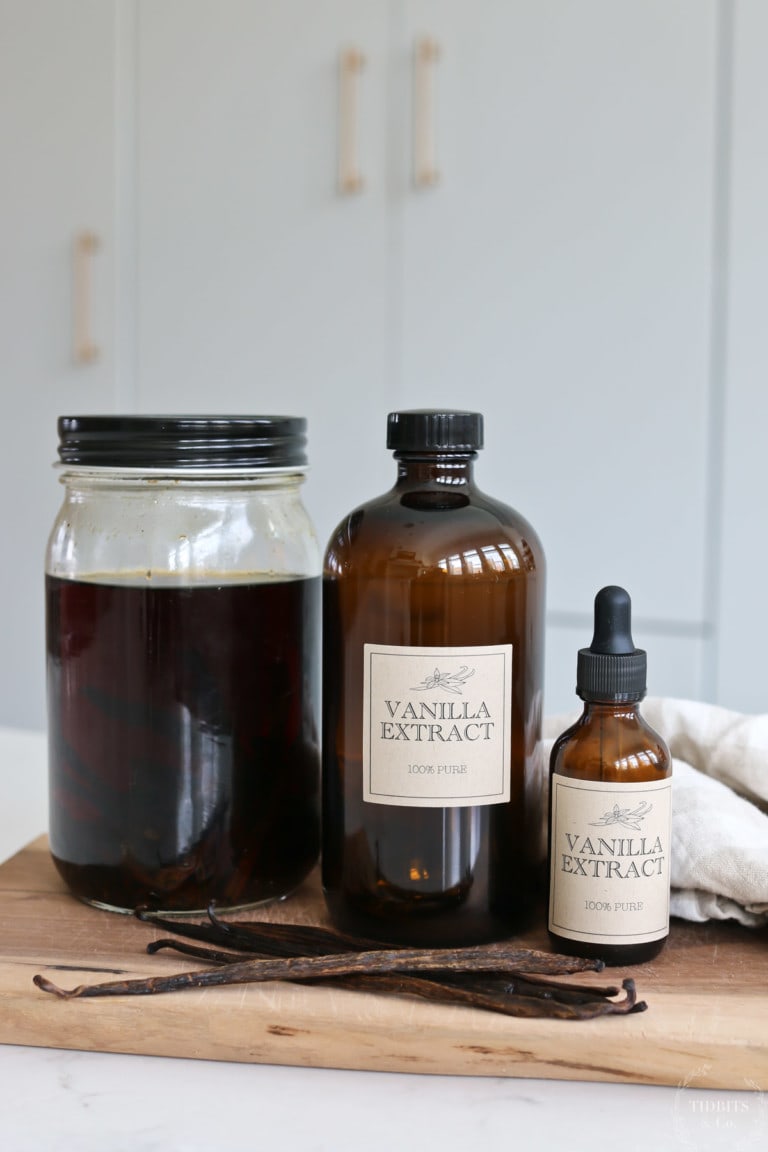


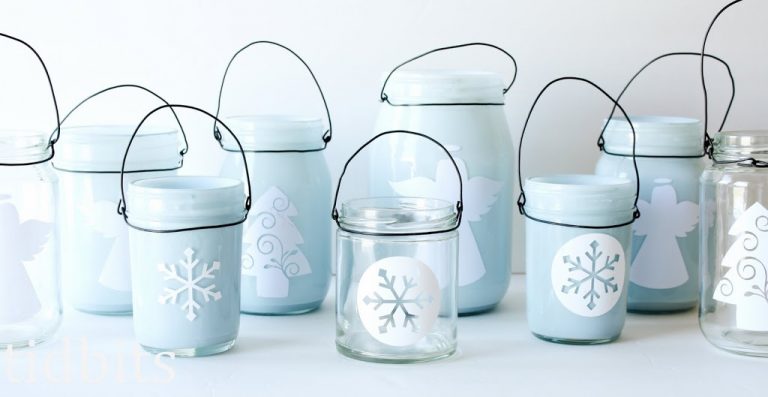

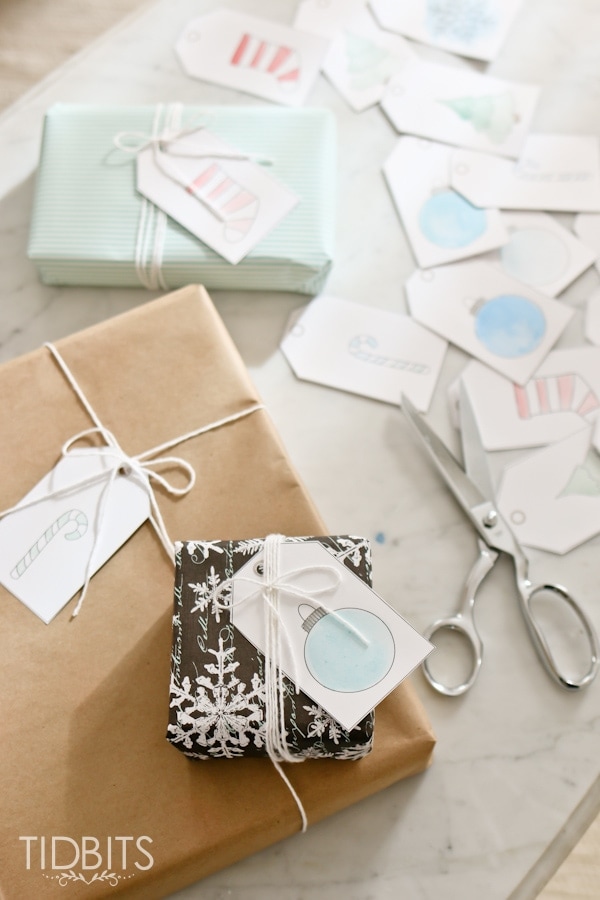







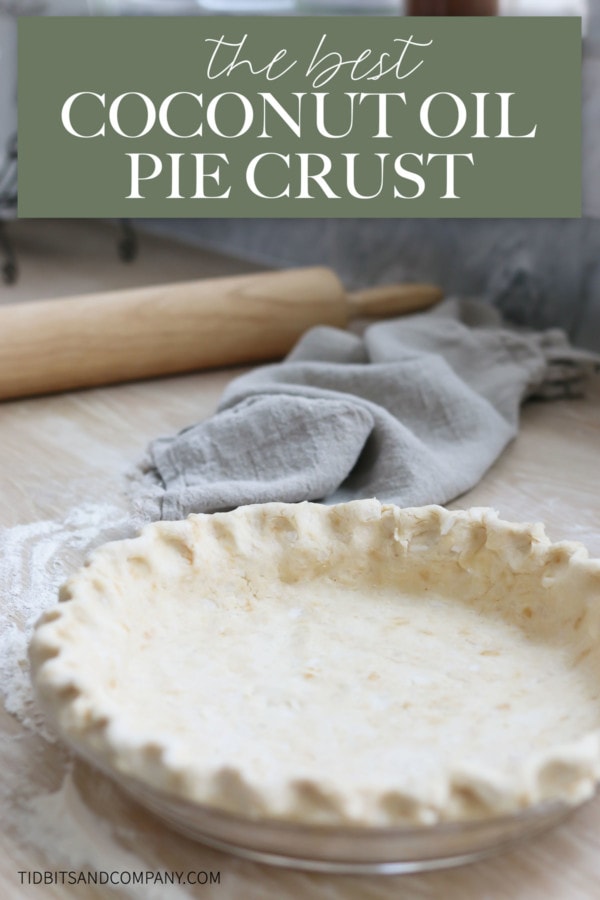
Free Printables!
Get instant access to the TIDBITS subscriber library full of free printables for the keeper of the home.
Discover more TIDBITS
Love this article? Make sure to connect with me on your favorite social platform below, and leave a comment so we can chat!